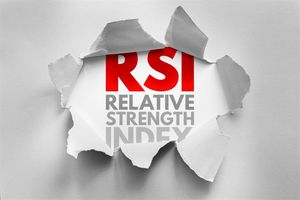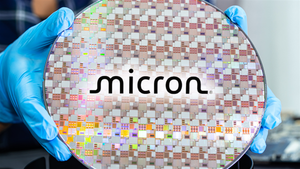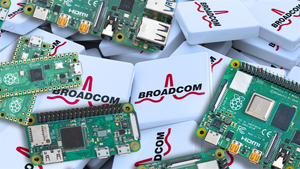 Photo from Unsplash
Photo from Unsplash
Originally Posted On: https://drdrone.ca/blogs/drone-news-drone-help-blog/dji-mini-4-pro-vs-dji-air-3-vs-dji-mavic-3-pro-comparison
DJI has steadily released stronger and more advanced drones with each new release, from the micro Mini 4 Pro to the versatile Air 3 to the powerhouse Mavic 3 Pro. Each drone is meticulously designed for distinct needs, with varying flight performances, intelligent features, and camera systems. From the feather-light portability of the Mini 4 Pro to the Air 3’s fusion of power and agility, each drone is tailor-made to explore the skies. Take a look at these three DJI drones to see which one is best suited for you.
Mavic 3 ProAir 3Mini 4 Pro
Starting Price
CAD $2,849.00 | US $ 2,199.00
CAD $1,429 |US $1099
CAD $1,059.00 | USD 759
Dimensions
(LxWxH)
231.1×98×95.4 mm Folded
347.5×290.8×107.7 mm Unfolded
207×100.5×91.1 mm Folded
258.8×326×105.8 Unfolded
148×94×64 mm Folded
298×373×101 mm Unfolded
Weight
Mavic 3 Pro: 958 g
Mavic 3 Pro Cine: 963 g
720 g
Less than 249 g
Image Sensor size
Main Camera: 4/3 CMOS 20MP
Medium Tele Camera: 1/1.3″ CMOS 48MP
Tele Camera: 1/2″ CMOS 12MP
1/1.3-inch sensor Dual Camera
1/1.3-inch sensor
Max Photo Resolution
48 MP
48 MP
48 MP
Max Video Resolution
5.1K/50 fps
4K/100 fps
4K/100 fps
Video Transmission
OcuSync 3+ 15km 1080p@60fps
O4 – 20km 1080p@60fps
O4 20km 1080p 60fps
Vision System
Omnidirectional
Omnidirectional
Omnidirectional
Max Flight Speed
68.4 kph (S-Mode)
75.6 kph (S-Mode)
57.6 kph (S-mode)
Max Flight Time
46 Minutes
46 Minutes
Regular battery: 34 Minutes
Plus Battery: 45 Minutes
Max Wind Resistance
43.2 km/h
43.2 km/h
38.5 km/h
Internal Storage
Mavic 3: 8GB
Mavic 3 Cine: 1TB
8 GB
2 GB
Design and Portability
The Mini 4 is the lightest of the three, weighing under 249. Its light weight makes it incredibly portable and also puts it under the 250g limit set by Transport Canada, allowing you to fly without the need for registration or training.
The Air 3 is a slightly larger drone at 720g, featuring an advanced propulsion system and intelligent flight algorithms to help you maintain stability and control throughout your flight. Its larger size allows for additional features, but it is still compact and foldable to allow for easy portability.
Lastly, the Mavic 3 Pro drone is the largest of the three, weighing around 958g (or 963g for the Mavic 3 Pro Cine). This extra weight holds its advanced triple camera system, giving you endless creative possibilities in one compact drone. Though its weight may be heavy compared to the Air 3 and the Mini 4 Pro, it is still quite compact and portable. You can easily fit it in a small bag or backpack to transport it to the farthest reaches in search for that perfect shot.
Flight Performance
DJI Mini 4 Pro
The Mini 4 Pro boasts a 34-minute flight time, which can extend to 45 minutes with the optional Intelligent Flight Battery Plus. With O4 video transmission, you’ll get 1080p/60fps FHD live feeds from distances of up to 20 km, a great improvement upon previous Mini drones. The Mini 4 can achieve speeds of up to 16 m/s and features a wind resistance of 10.7 m/s, allowing you to fly further and farther than ever before.
DJI Air 3
The Air 3 features an even higher flight time of 46 minutes, allowing you to explore your surroundings and perfect your shots all in one flight. Like the Mini 4 Pro, the Air 3 is equipped with the advanced O4 video transmission system. The drone can go slightly faster than the Mini 4 with a Max Horizontal Speed of 21 m/s. Its wind resistance is also slightly higher at 12 m/s, making it even more sturdy in areas with high wind and inclement weather.
DJI Mavic 3 Pro
The Mavic 3 Pro features the same extended flight time as the Air 3 at 46 minutes, giving you plenty of time to do route planning, composition, and even filming hyperlapse videos. The flight range is slightly less high than the Air 3 and Mini 4 Pro, as the drone is equipped with Ocusync 3+. Still, this gives you a max transmission range of 15 km, which should be plenty to get the job done. The Mavic 3 Pro has the same maximum speed and wind resistance as the Air 3 (21 m/s and 12 m/s respectively), so it’s pretty comparable in terms of flight performance.
Camera Performance
DJI Mini 4 Pro
With its small size, the Mini 4 Pro has the least room for camera features, but it still manages to pack an incredible punch. The camera is powered by a 1/1.3-inch CMOS sensor that features Dual Native ISO Fusion, f/1.7 aperture, and 2.4μm 4-in-1 pixels. These factors all combine to give you crystal clear details and greater highlight and shadow details.https://drdrone.ca/pages/dji-mini-4-pro
The Mini 4 Pro can shoot in 4K/60fps HDR, and even shoots Slo-Mo videos in 4K/100fps. It also includes an impressive Night Shots feature that uses a noise reduction algorithm to suppress noise and make footage cleaner in low-light scenarios. 10-bit D-Log M allows you to capture over a billion colors and create picture-perfect footage with every shot.
The camera even has a Digital Zoom function that allows you to capture photos with up to 2x zoom and videos with 4x zoom. Lastly, the True Vertical Shooting Function lets you film vertical videos perfect for social media, while Large-Angle Tilt helps you achieve a smoother camera motion with a 60° max tile angle.
DJI Air 3
In terms of camera performance, the Air 3 is a clear step up. The drone has a dual-primary camera system that uses both a 1/1.3-inch CMOS wide-angle camera and a 1/1.3-inch CMOS 3x medium tele camera. These two cameras may have identical sensor sizes, but their differing focal lengths give you uniform image quality and limitless creative possibilities.
With the wide-angle camera, you can capture sweeping landscapes and immersive shots of nature. The 3x medium tele camera introduces lossless 3x optical zoom, allowing you to get a closer look at your subjects within visually compelling compositions. Each camera produces 48MP photos with crystal clear details, allowing you to easily fine-tune and crop the photos during post-processing.
The Air 3’s dual-camera system records 4K/60fps HDR videos as well. Both CMOS sensors support Dual Native ISO, giving you stunning video footage without any cropping. Like the Mini 4 Pro, the Air 3 supports 10-bit D-Log M and HLF to further enhance dynamic range and color depth.
DJI Mavic 3 Pro
Of the three drones, the camera performance of the Mavic 3 Pro is the clear winner. The drone contains a triple camera system consisting of three highly advanced cameras. The first is the 4/3 CMOS Hasselblad camera, which creates both 20MP photos as well as 12-bit RAW photos that any professional photographer will love. The larger sensor improves resolution and noise suppression in low-light environments. It also features a dynamic range of up to 12.8 stops, giving you much more detail in highlights and shadows as well as more natural transitions between the two.
The Hasselblad camera also includes aperture adjustment to be used to cater to any kind of lighting situation. The 24mm equivalent autofocus lens has an 84° field of view, giving you a wider range of detail in your shot. The camera also uses VDAF technology that uses multiple vision sensors to calculate distance data and optimize focusing speed. Lastly, the Hasselblad Natural Color Solution (HCNS) better captures natural colors to reduce the need for post-processing.
The second camera is the 70mm medium tele camera. This camera compresses the depth of the field and focuses on the subject, giving each shot a visual center of gravity and imbuing the camera movement with a greater sense of space. The 70mm focal length creates a unique spatial compression effect, making your photos look more cinematic and professional. You can even use the camera to shoot timelapse videos via 3x optical zoom.
The third and final camera is the 166mm tele camera, an upgraded tele camera with a wider f/3.4 aperture and higher resolution. This camera captures 12MP photos, records videos in 4K/60fps, and includes a powerful 7x optical zoom. The hybrid zoom function reaches as high as 28x, allowing you to film great distances while keeping the drone safe.
Obstacle Sensing
All three drones feature omnidirectional obstacle sensing, with four wide-angle vision sensors and a pair of downward vision sensors to detect obstacles from any angle. The drones also use Advanced Pilot Assistance Systems (APAS 5.0) to perform automatic braking and bypassing during flight. This is particularly notable for the Mini 4 Pro, as it is the first micro drone from DJI to include omnidirectional obstacle sensing.
Software Features
DJI Mini 4 Pro
Software features is another area in which the three drones differ greatly. Even with its small size, the Mini 4 still manages to fit in a ton of really cool abilities. WayPoint Flight allows you to set automatic routes, capturing the same video on multiple flights. Cruise Control reduces operation fatigue and camera shake during long-distance, steady state flight. Advanced RTH will automatically plan a safe flight route back if the drone loses signal or battery.
The Mini 4 Pro also comes with a few camera features that help you get the shot you need. Spotlight, Point of Interest, and ActiveTrack 360° use improved subject tracking capabilities to keep the subject in frame while you fly the drone. MasterShots and QuickShots both come with several dynamic camera movement templates at the tap of a button. MasterShots are tailored for portrait, close-up, and long-range shots, while QuickShots send the drone flying in motions like Helix or Boomerang to film cool videos for social media.
The Hyperlapse function allows you to shoot a moving time-lapse video in multiple different ways, and even supports compositing while shooting to allow you to perfect your video on the go. Lastly, the Panorama function supports shooting 180°, Wide Angle, Vertical, and Sphere panoramic photos to capture a wider field of view.
DJI Air 3
The Air 3 features its own variety of intelligent flight modes. Like the Mini 4, it includes features such as WayPoint, Advanced RTH, MasterShots, QuickShots, Spotlight 2.0, and Point of Interest 3.0. While the Air 3 also includes ActiveTrack 5.0, its version of ActiveTrack is slightly less advanced than the Mini 4’s ActiveTrack 360°. However, the Air 3 features a Night Mode for optimal nighttime flying as well as SmartPhoto 3.0 to automatically switch to the best shooting mode for your environment.
DJI Mavic 3 Pro
The Mavic 3 Pro doesn’t have quite as many intelligent flight features as the other two drones, as most of its size is taken up by the powerful triple camera system. But the drone does have a few goodies, including Advanced RTH. One cool feature is Apple ProRes 422 HQ, which is only available with the Mavic 3 Pro Cine. This professional-grade tool gives you more options for video recording and includes a built-in 1TP SSD and a 10Gbps lightspeed data cable that allow you to manage and transfer your files in a flash. The Mavic 3 Pro is also compatible with the LightCut app, which wirelessly connects the Mavic 3 Pro with your phone to allow you to preview and edit your footage with the tap of a button.
Which DJI DRONE Is Right For You?
DJI Mini 4 Pro
The Mini 4 Pro sells for $759 USD ($1039 CAD), making it the least expensive of the three. This drone is the most powerful micro drone that DJI has to offer, and it definitely holds its own against other larger drones. If you’re a novice pilot, you’re looking to avoid dealing with registering your drone, or you’re looking for a cheaper option, this drone is a great beginner drone. You won’t be sacrificing anything in terms of flight performance or camera, as the Mini 4 Pro has more than enough imaging capabilities to make it worth the cost.
DJI Air 3
The Air 3 costs $1,099 USD ($1504 CAD), making it the second most expensive option of the three. This drone has a more powerful camera thanks to its dual-primary camera system, which offers stunning photographs and videos that seem quite professional. This drone is suitable for amateur or professional photographers looking for an affordable drone that doesn’t skimp on image quality.
DJI Mavic 3 Pro
The Mavic 3 Pro is the most expensive option at $2,199 USD ($3009 CAD). This drone definitely blows the other two out of the water when it comes to image quality, so it’s a good choice for professional photographers who want only the best camera at their disposal. With the impressive quality of the Hasselblad camera and the versatility between the three sensors, the Mavic 3 Pro is the ultimate in drone camera quality.







